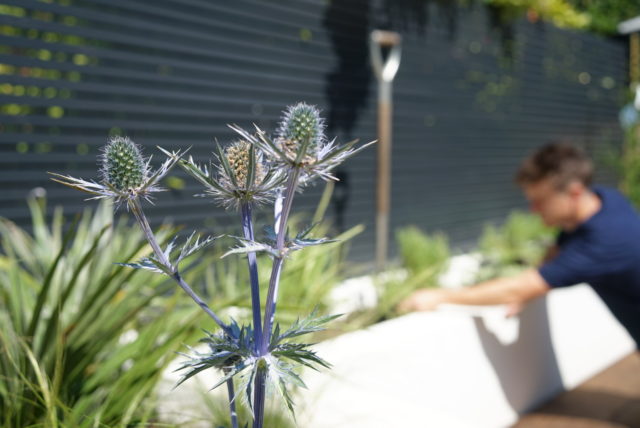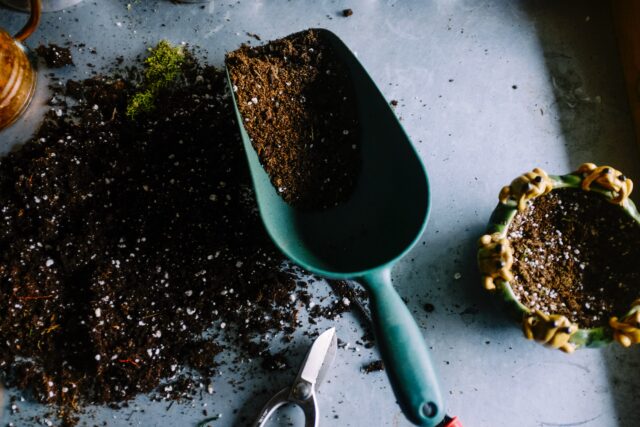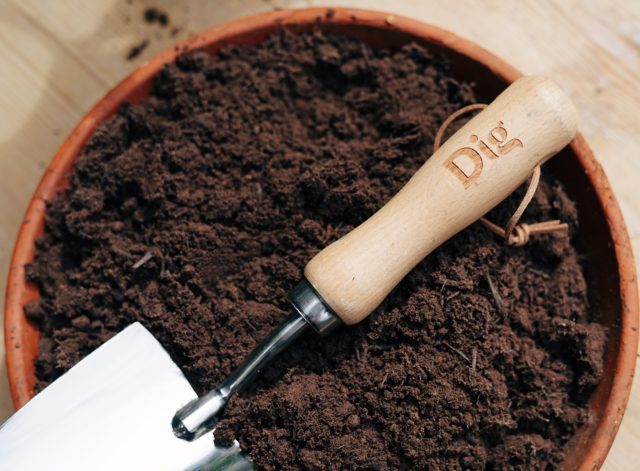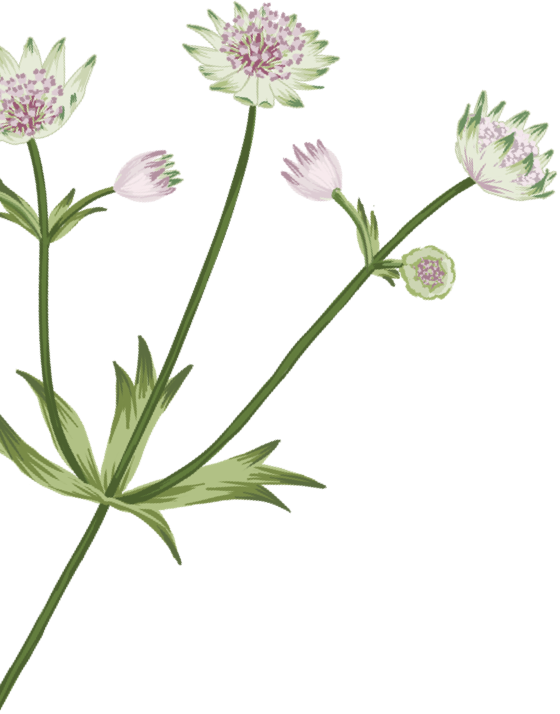Naturalistic gardening – let it grow
Alex Hollingsworth, Dig Co-founder and Design Director: I can see the ‘Chaos Gardening’ idea that appeared across show gardens in 2024 finding a more manageable application across our gardens at home in 2025. Chaos gardening may not be completely practical or desirable for most gardeners – the idea of mixing seeds together, throwing them around and seeing what happens – being perhaps a step too far. However, we think we’ll see the ethos and aesthetic of chaos gardening being interpreted and adopted at a more domestic level in 2025. This might mean letting weeds grow, not cutting back over the winter, letting plants become intertwined with each other, and just generally embracing a less manicured approach. This rather unruly and wild look suits cottage gardens in particular, but is being adopted in the city – think of the roundabouts and verges left to grow by the councils over the last summer, and how accustomed we’ve become to wilder roundabout planting. It’s also wonderful news for wildlife and diversity – live and let live!

Pet-First Gardening
Fabienne Maitland Robinson, Dig Garden Designer: This year’s RHS Chelsea Flower show will feature a garden designed by one of gardening’s biggest champions, Monty Don. The twist though is that this will be a garden designed specifically with dogs in mind. Any regular viewers of Gardener’s World will know just how prominently Monty’s dogs feature and so this garden is a perfect fit. I predict that it will encourage an increased focus on garden design for both pets and other animals as we consider our place on the planet and the importance of a biodiverse eco-system. Gardening without humans in mind might start to creep up the agenda.
As a dog owner myself, I was so pleased to work on making sure that all of our Dig garden designs have an option to ensure they are additionally safe for dogs, cats and other pets – by easily removing any plants that may, if disturbed, release harmful sap. When ordering an Instant Bed, you can simply click a button to make this happen.
Clover lawns
Lydia Morton, Dig Operations Lead: I foresee the desire for less traditional lawns to continue growing. Thyme lawns have had a moment and remain a beautiful, fragrant alternative to grass. A new player on the scene though is Clover. I’ve planted a clover lawn myself and Dig have planted a clover lawn for a Bespoke customer last year in place of traditional grass and both have delivered wholeheartedly. They are eco-friendly as they require no mowing, they provide lots of flowers for pollinators and so are brilliant for encouraging a nature-friendly environment in your garden and, apart from anything else, are easier to look after than a conventionally pristine lawn.

Adding life to unloved corners
Jenny Teutsch, Dig Garden Designer: At Dig we believe that even the darkest, driest spots in your garden can be made beautiful (‘right plant, right place’ as they say!). I am so excited that this season we will be launching plant packs specifically designed to glow up those tricky areas or to add colour to spots that need some cheer! Whether you are gardening under a mature tree or planting in portable containers for a rental, there are plants to suit every inch in your outdoor space.
Bold and bright colours
Serena Fremantle, Dig Garden Designer: I predict that the tide of pastels and muted colours may be turning this year – or at least diversifying. Chelsea Flower Show, which often drives the year’s big gardening trends, is predicted to include lots of bright colours this year. Our advice from Dig, is to implement this not only with plants and flowers, but also your outdoor space – think furniture, paint and ornaments to bring a flash of life and vibrancy to your outdoor space amidst the greenery.
If you’re looking to bring colour and vibrancy into your gardens, our themes The Adventure and The Cottage are packed with colour and professionally-designed specifically with boldness, brightness and brilliance in mind.

Vertical gardening and edimentals
Fabienne: I think 2025 is likely to see a surge in creative and unconventional gardening approaches. Gardening vertically has gained popularity with living walls and, often, increasingly limited outdoor space. Homeowners have combated this brilliantly by experimenting with growing unusual plants up walls and fences – breaking away from conventional living walls to blend common plants with less common ones. I can see “edimentals” – seamlessly blending edible plants like herbs and vegetables within ornamental flower borders – emerging in this space too. It’s really exciting to see and I’m such an advocate for gardeners approaching their outdoor spaces adventurously – breaking away from traditional rules and embracing unique planting combinations and unexpected design choices.
Drought-proof gardening
Henry Bartlam, Dig Founder: There’s no hiding from the fact that the planet is getting warmer. It presents many considerations and one likely one is an increased reliance on drought-proof planting in some areas. Though a slightly alarming prospect, it is an opportunity to think about gardening for the environment, choosing the right plant for the right place and using our gardens to help prevent decline. I think gravel or rain gardens, used to improve drainage and prevent flooding, will see an increased and admirable popularity and look forward to seeing the plant combinations that brilliantly inventive gardeners introduce to these useful and aesthetically pleasing spaces.
Gardening for wildlife
Ed Maitland Smith, Dig Co-Founder, Communications & Branding: This isn’t a particularly unique prediction, but it is very encouraging to see the continually-growing focus on nature in gardening – whether that’s providing food or shelter, or planting to encourage as wide a variety of mammals, birds, reptiles, amphibians and insects into our outdoor spaces as possible. The huge surge in awareness of things like bug hotels, log piles, and native planting is, in often increasingly un-nature-friendly urban environments, a reassuring prospect. Small steps can sometimes feel a bit futile, but I think they are all moves in the right direction and, in the face of climate breakdown, I predict that this trend will continue to flourish as we seek to do even just a little bit to redress the balance.





